Service History
The wooden double centerboard schooner
Emeline was originally built with two masts and a single centerboard (later a third mast and a second centerboard was added). The additional mast would allow for extra speed and the extra centerboard would allow vessels like
Emeline to sail closer to the wind and therefore get cargo to market faster. The additional hardware would take up space in the cargo hold, but fast sailing allowed for additional voyages that would compensate for the loss of cargo capacity. Double Centerboard schooners are a rare type of Great Lakes schooner that lasted for only a short duration on the Great Lakes.
The
Emeline was built in 1864 by master shipbuilder Myron Williams at Vicksburg (name changed to Marysville in 1859), Michigan. Some sources cite the build date as 1862. In 1874-1875 the
Emeline was valued at $5,500 and rated B1.
The vessel spent most of its career carrying lumber throughout the lower Great Lakes region.
1864: Edward Kanter, owner of the
Emeline since April 1863, had the two-masted schooner rebuilt into a three-masted, double centerboard schooner, increasing the length from 83.0 feet to 111.4 and the tonnage from 121.12 tons to 127.9. These were the only major changes ever made to the vessel's hull.
October 9, 1871, the
Emeline was docked on the Chicago River during the Great Chicago Fire. The mate on board had commissioned the tug
L.H. Boole to tow the vessel to safety. The tug took
Emeline in a hip tow and navigated past several blocks of burning buildings to a point above 12th Street in downtown Chicago thus saving the schooner. The crew of the
L.H. Boole claimed the mate from the
Emeline had offered to pay $300.00 for the tow when the standard rate was $30.00. The mate of the
Emeline claimed the fee was extortion and refused to pay. The dispute would be settled on February 23, 1875, by Judge Henry Blodgette for the US District Court for the Northern District of Illinois. The owners of the
Emeline were libeled for failure to pay for services rendered by tug
L.H. Boole for moving the schooner on the night of the Great Chicago Fire and were forced to pay the $300.00 for the tow.
June 26, 1875, the
Emeline had collided with the schooner
Rouse Simmons while sailing through a fog. The
Emeline was cut down almost to its waterline. Its fore rigging was torn away, the foresail was ruined, bulwarks stove in, several stanchions were broken and a large section of the railing was missing.The
Rouse Simmons lost its bowsprit and jibboom.
Emeline limped into Chicago on June 28, 1875, and went into repairs at a shipyard. The schooner was out of service for several weeks for repairs.
March 13, 1896: Adam Abrahamson became the last owner/captain of the
Emeline when he purchased the vessel for $1,500.
Last Document Of Enrollment Surrendered: Chicago: 8/18/1896: "Vessel Lost".
Final Voyage
The three-masted schooner
Emeline, #7492, capsized on August 8, 1896. The
Emeline had been bound for the Allen and Sons Tannery in Kenosha, Wisconsin with a load of tamarack bark from Charlevoix, Michigan. When about twenty to twenty-five miles southeast of Bailey's Harbor, the vessel was struck by a squall out of the northwest and knocked over onto her starboard beam end. Her deck load of bark rolled off, she then righted herself only to capsize again to her port side. The captain and three crew members were able to save themselves by launching the yawl boat and rowing to Bailey's Harbor. The schooner
Charles Foster happened by the
Emeline after the crew had rowed away and as a result mistakenly reported to the press that the crew had probably been lost.
The tug
Sydney Smith from Sturgeon Bay was sent out by the Life Saving Station keeper the next day to locate and tow the
Emeline into Bailey's Harbor. The vessel was found awash and drifting on the open lake. An attempt was made to right her by pulling on the mast, but this only broke the mast. The schooner
Nancy Dell was used to right her but she rolled over again that night. By August 22, the schooner sank off Anclam's Pier, in Baileys Harbor, in 21 feet of water. Only the vessel's gunwales, two remaining masts, and spars showed above the surface. The schooner's final owner Adam Abrahamson had no money to raise the ship, no money to pay the crew and the cargo was uninsured, therefore the wreck of the
Emeline was abandoned.
Today
By January of 1897, the wreck of the
Emeline had broken into pieces. The forward section of the wreck remained where it had sunk, the stern section had moved 600 feet north working its way toward shore. It sat 400 feet west of the range light, in 19 feet of water. In 1903, Captain Thomas Isabell retrieved the anchors from the wreck.
Mr. Thompkins of the United States Corps of Engineers visited the wreck site in October of 1896. He stated that as long as the tops of the masts were above the water, there should be adequate notice of the wreck's presence to passing ships. Once
Emeline's masts were gone and she was no longer obviously visible, the United States Lighthouse Service would consider the
Emeline to be a hazard to navigation. The
Emeline was dynamited in September of1903 to allow greater clearance for navigation.
Longtime known as the "Anclam Pier Wreck", today the vessel sits upright, with many of its hull components intact. Many more remain beneath the sand.
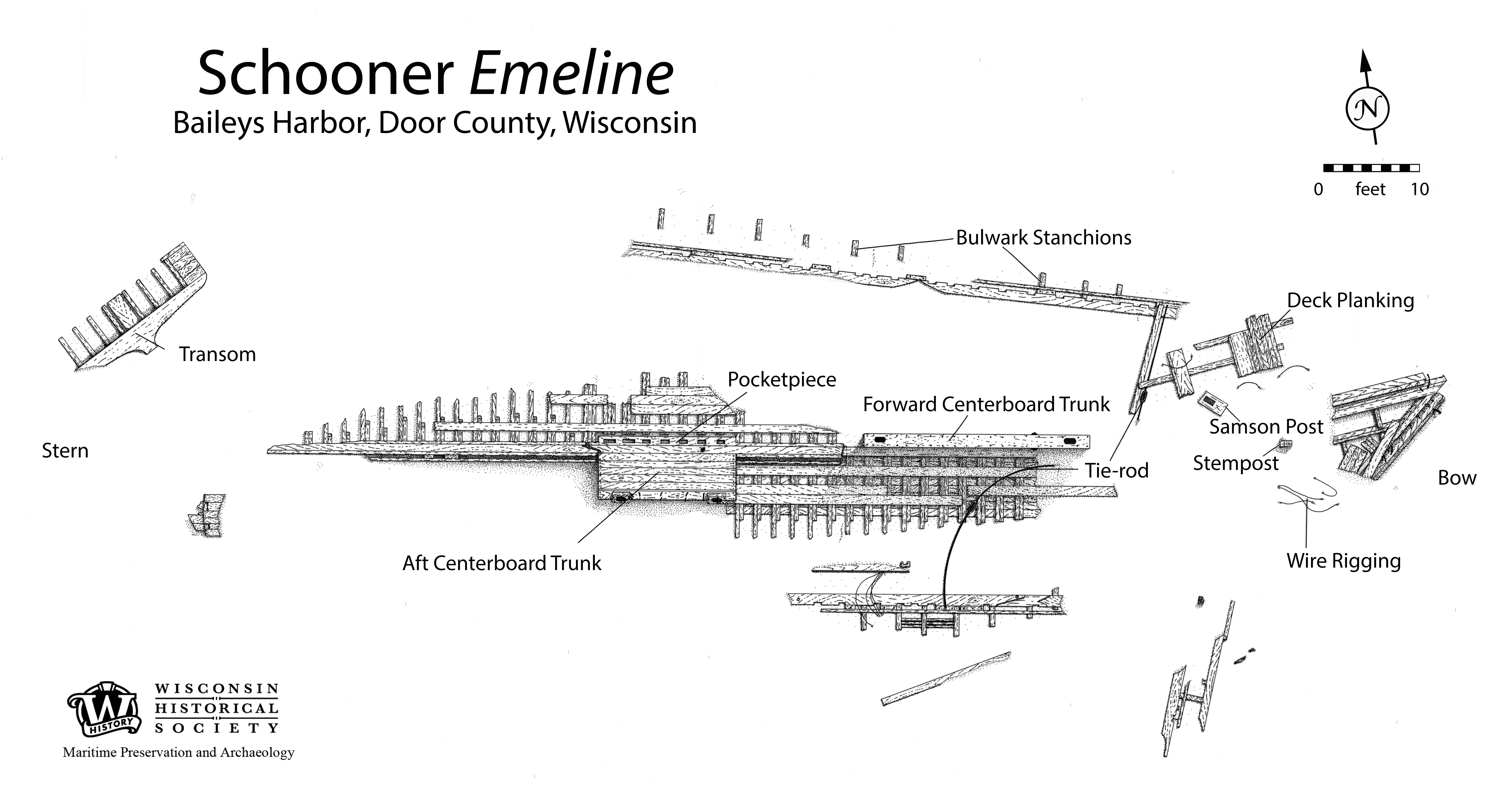
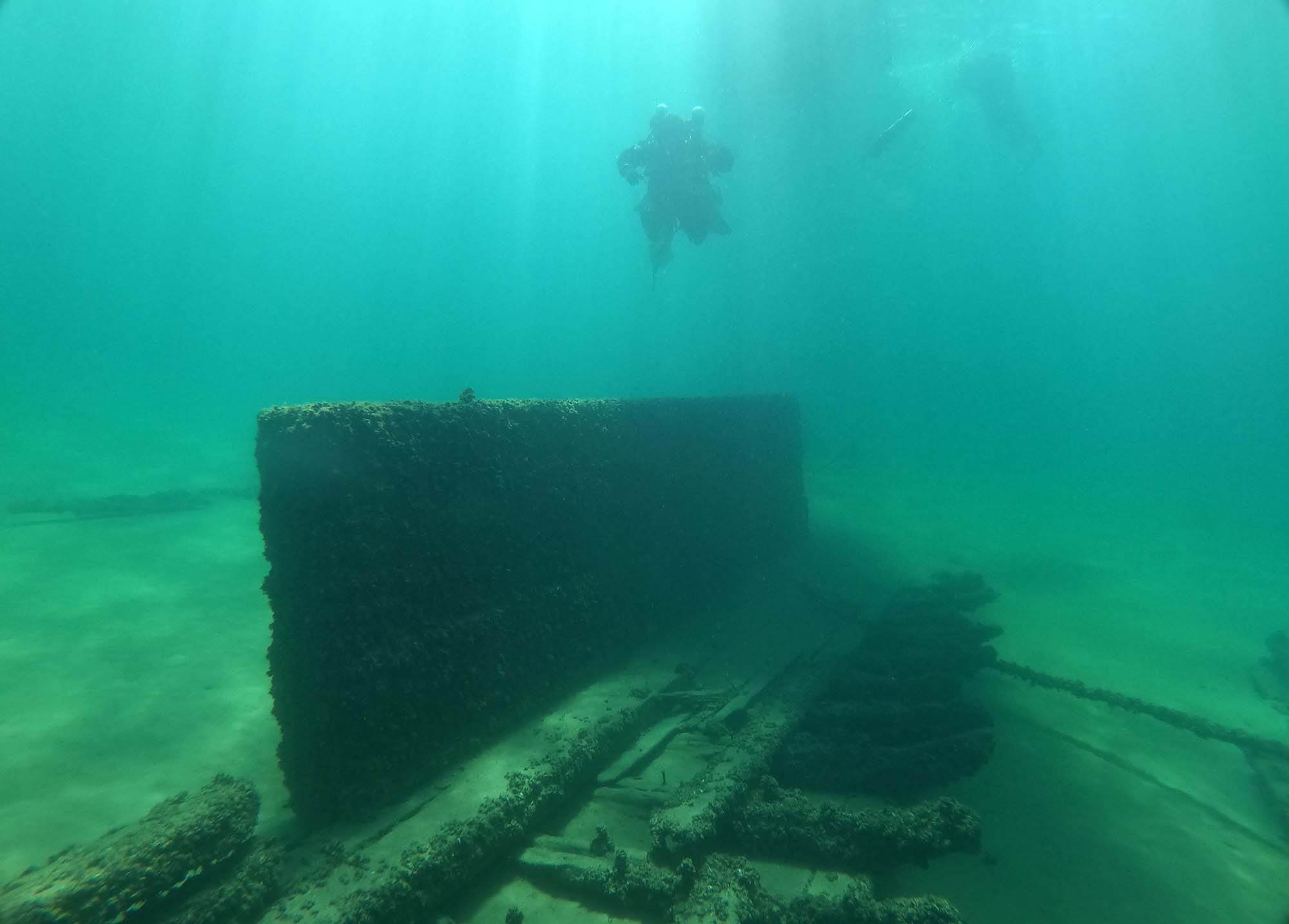
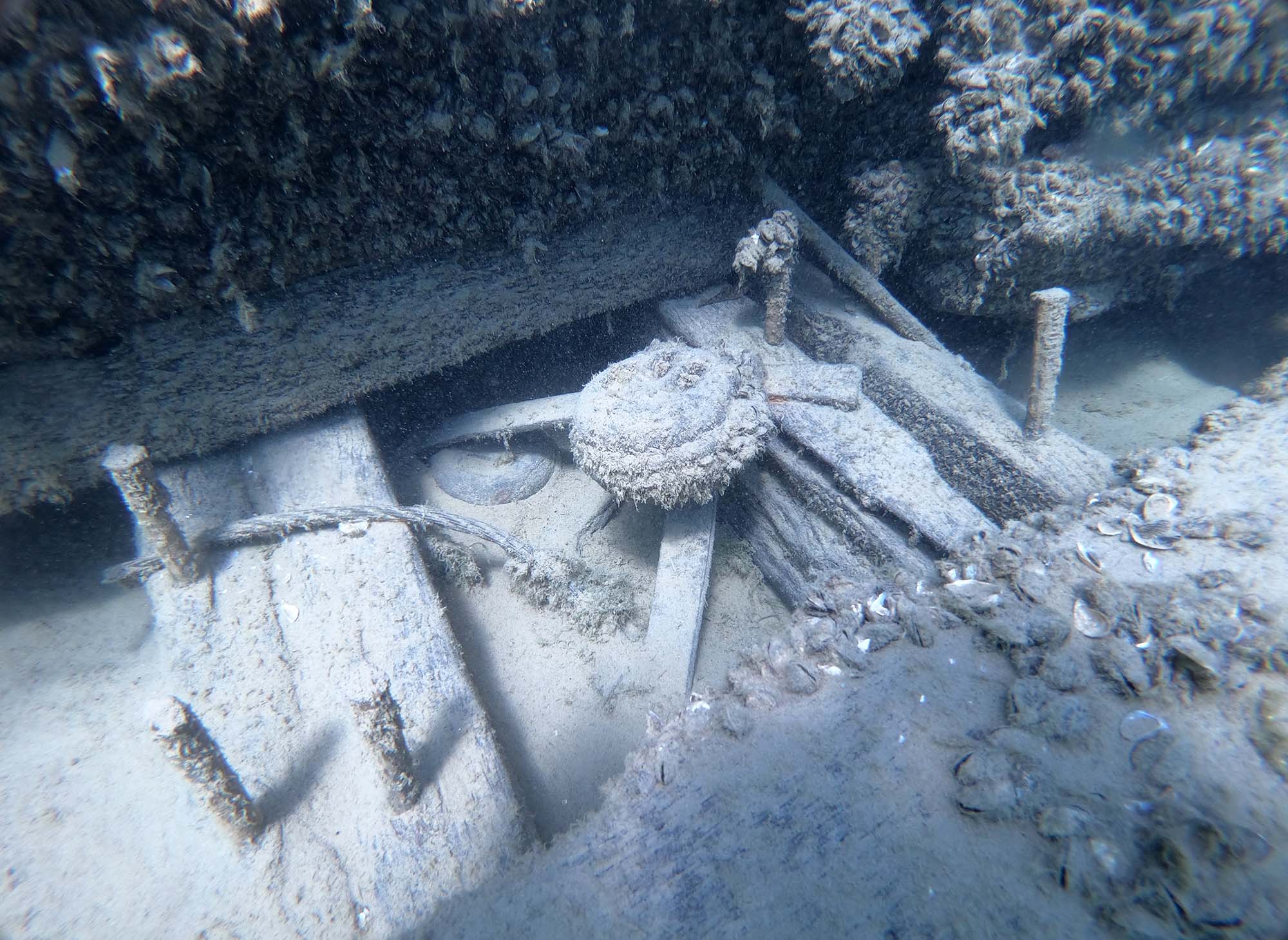
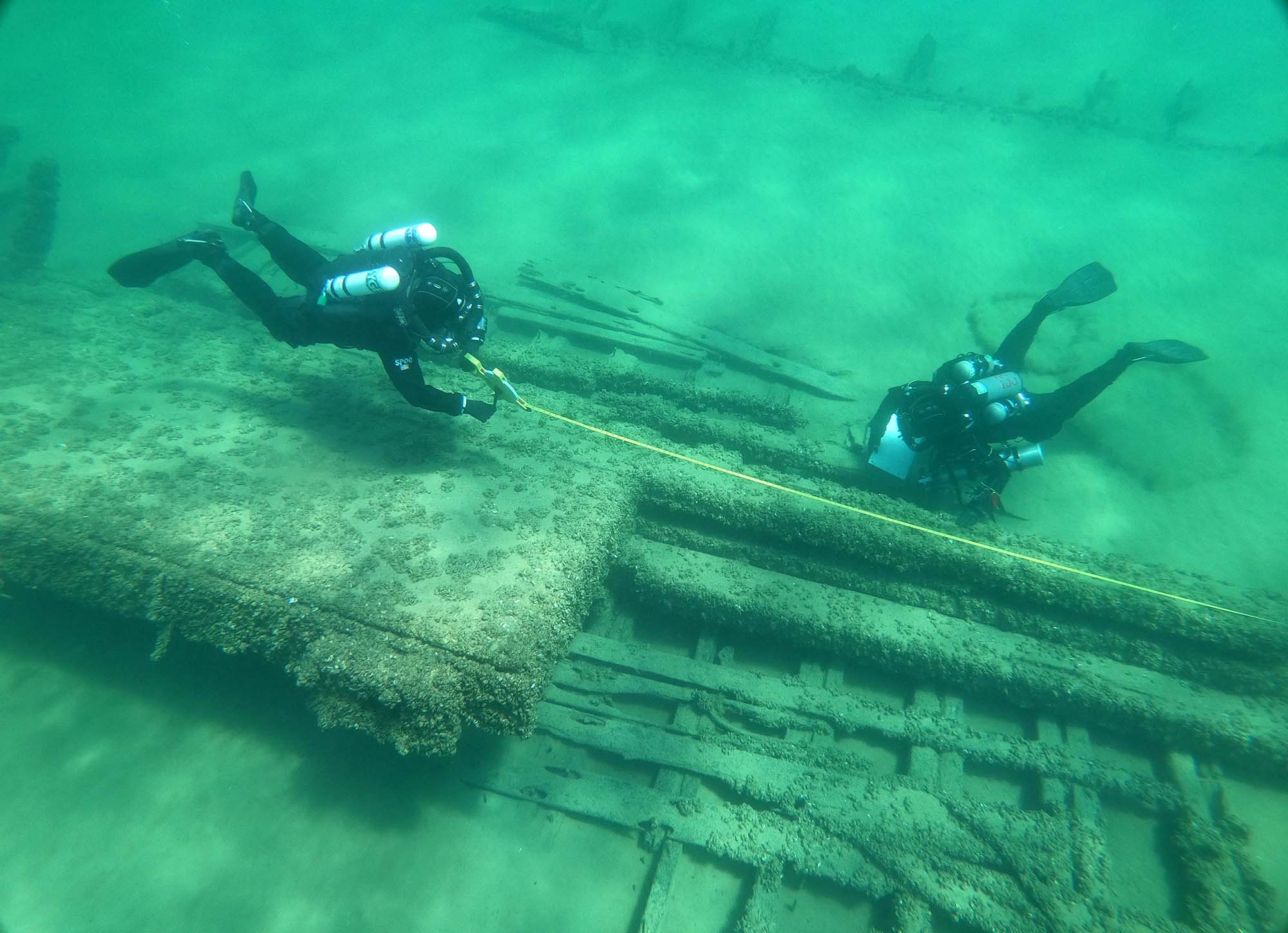
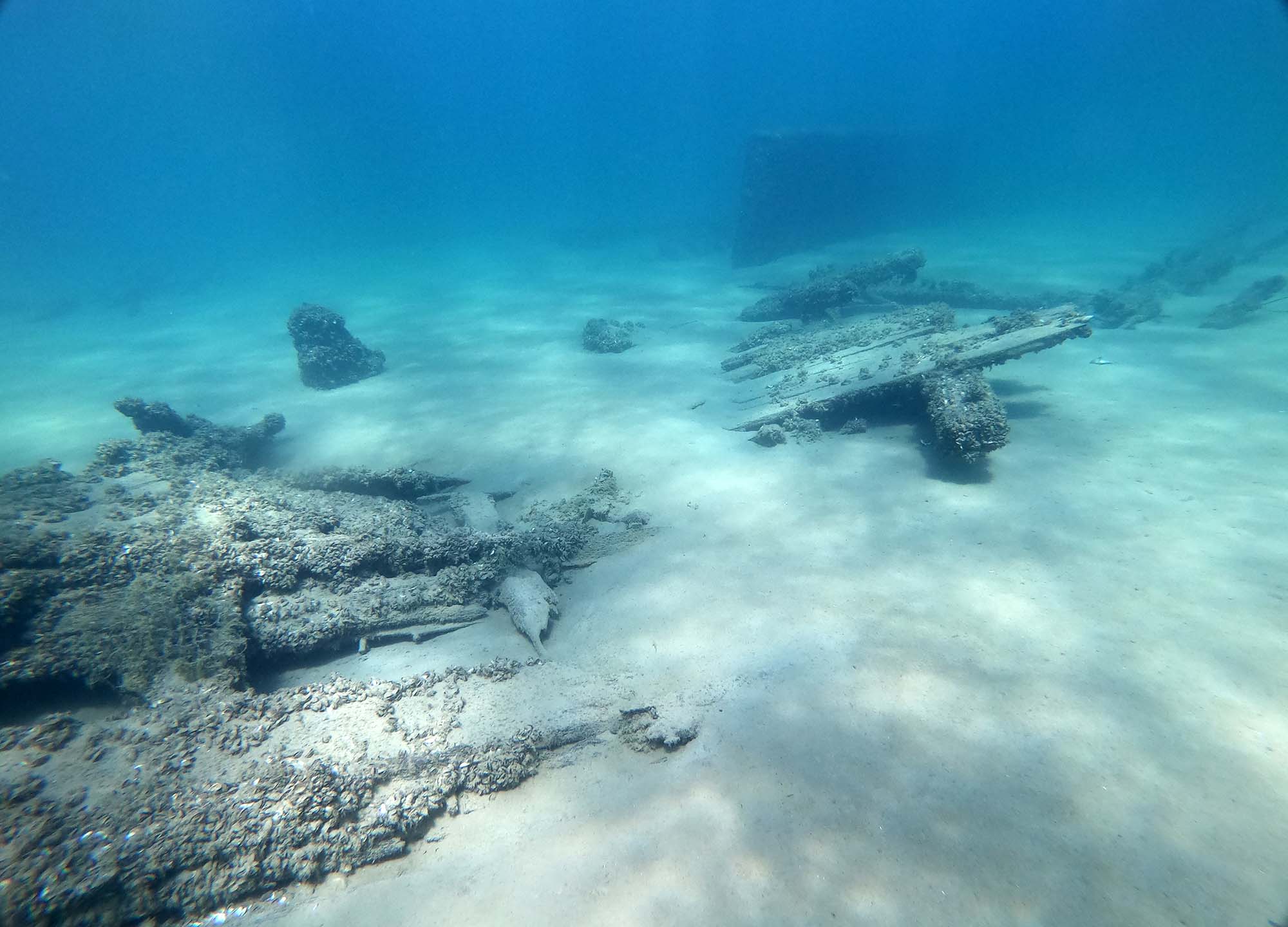
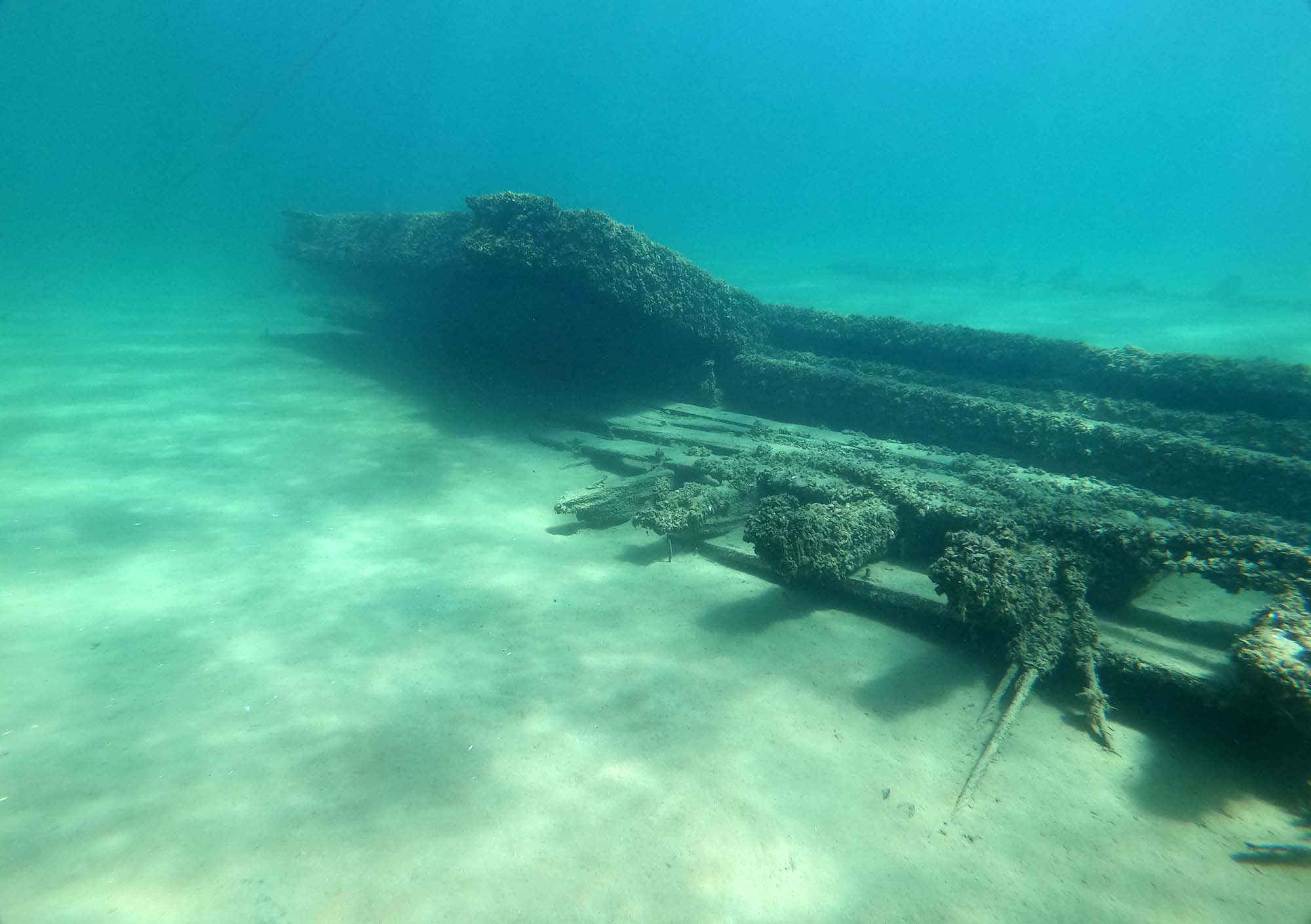
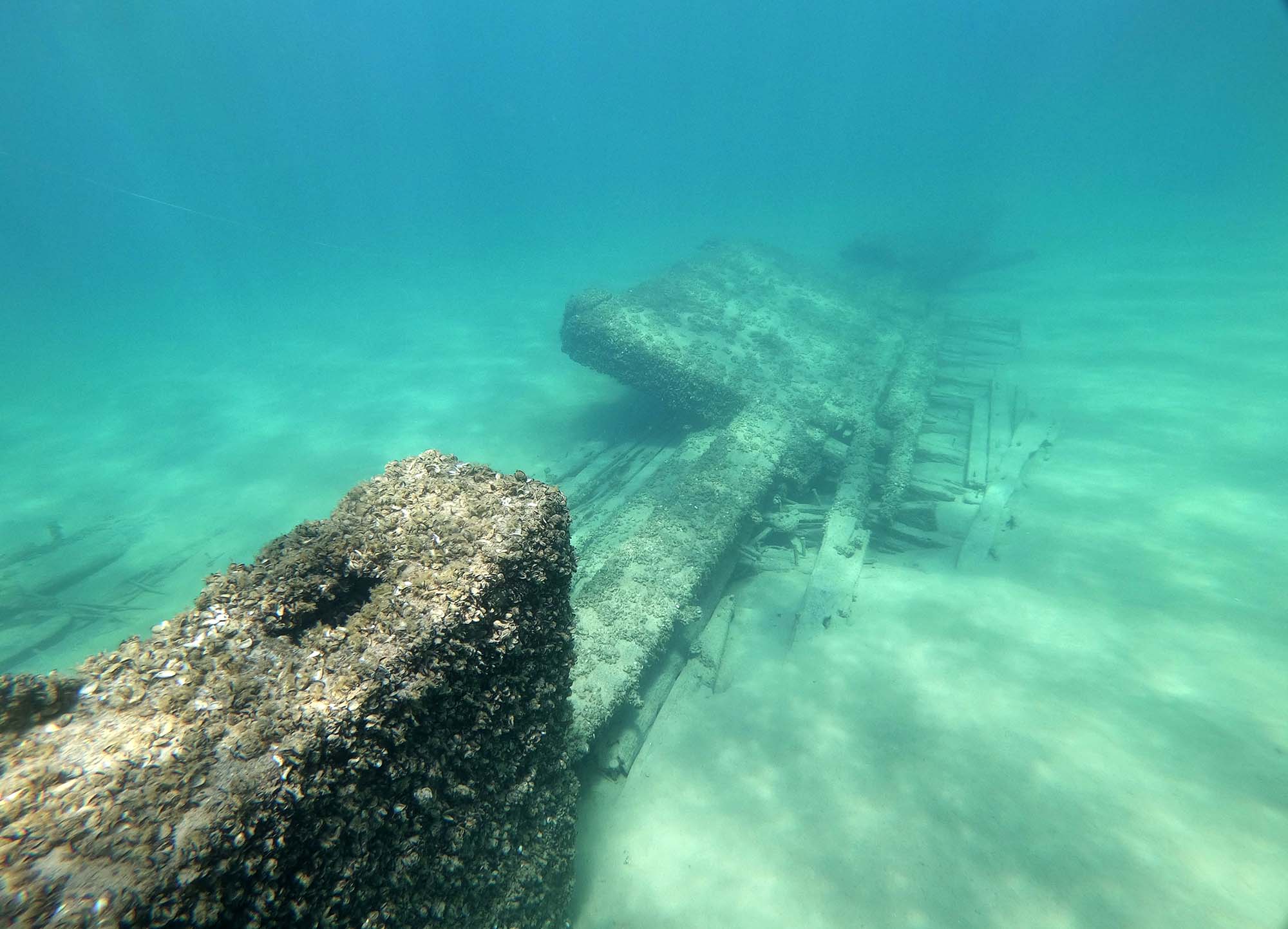

 Confirmed Location
Confirmed Location
 Unconfirmed location
Unconfirmed location